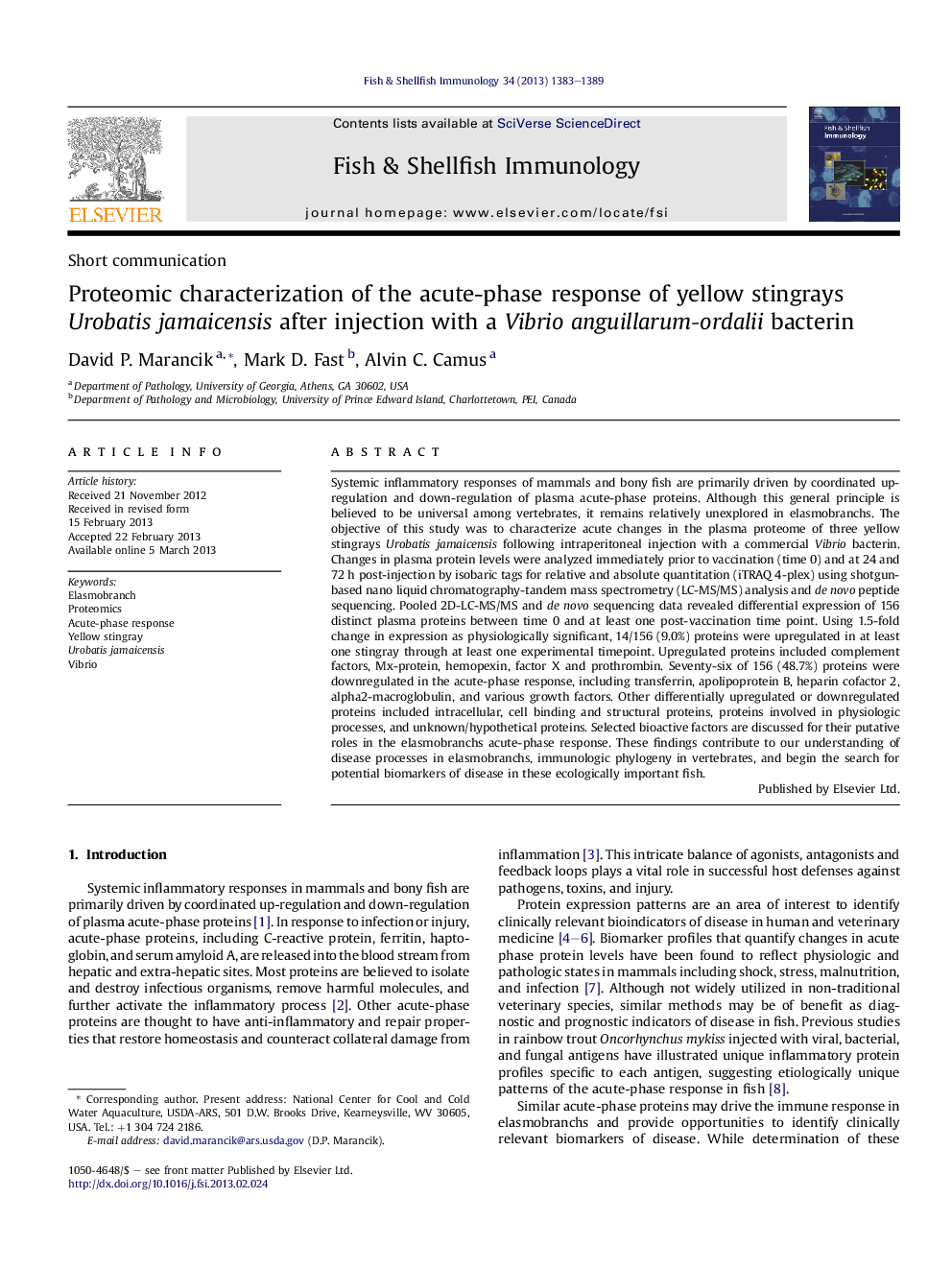| Article ID | Journal | Published Year | Pages | File Type |
|---|---|---|---|---|
| 2431889 | Fish & Shellfish Immunology | 2013 | 7 Pages |
Systemic inflammatory responses of mammals and bony fish are primarily driven by coordinated up-regulation and down-regulation of plasma acute-phase proteins. Although this general principle is believed to be universal among vertebrates, it remains relatively unexplored in elasmobranchs. The objective of this study was to characterize acute changes in the plasma proteome of three yellow stingrays Urobatis jamaicensis following intraperitoneal injection with a commercial Vibrio bacterin. Changes in plasma protein levels were analyzed immediately prior to vaccination (time 0) and at 24 and 72 h post-injection by isobaric tags for relative and absolute quantitation (iTRAQ 4-plex) using shotgun-based nano liquid chromatography-tandem mass spectrometry (LC-MS/MS) analysis and de novo peptide sequencing. Pooled 2D-LC-MS/MS and de novo sequencing data revealed differential expression of 156 distinct plasma proteins between time 0 and at least one post-vaccination time point. Using 1.5-fold change in expression as physiologically significant, 14/156 (9.0%) proteins were upregulated in at least one stingray through at least one experimental timepoint. Upregulated proteins included complement factors, Mx-protein, hemopexin, factor X and prothrombin. Seventy-six of 156 (48.7%) proteins were downregulated in the acute-phase response, including transferrin, apolipoprotein B, heparin cofactor 2, alpha2-macroglobulin, and various growth factors. Other differentially upregulated or downregulated proteins included intracellular, cell binding and structural proteins, proteins involved in physiologic processes, and unknown/hypothetical proteins. Selected bioactive factors are discussed for their putative roles in the elasmobranchs acute-phase response. These findings contribute to our understanding of disease processes in elasmobranchs, immunologic phylogeny in vertebrates, and begin the search for potential biomarkers of disease in these ecologically important fish.
► 156 plasma proteins were differentially regulated during the acute-phase response. ► 14/156 (9.0%) proteins exhibited ≥1.5-fold increase in concentration. ► 76/156 (48.7%) proteins exhibited ≤1.5-fold decrease in concentration. ► Identified proteins include immunologic and physiologic proteins, amongst others.
